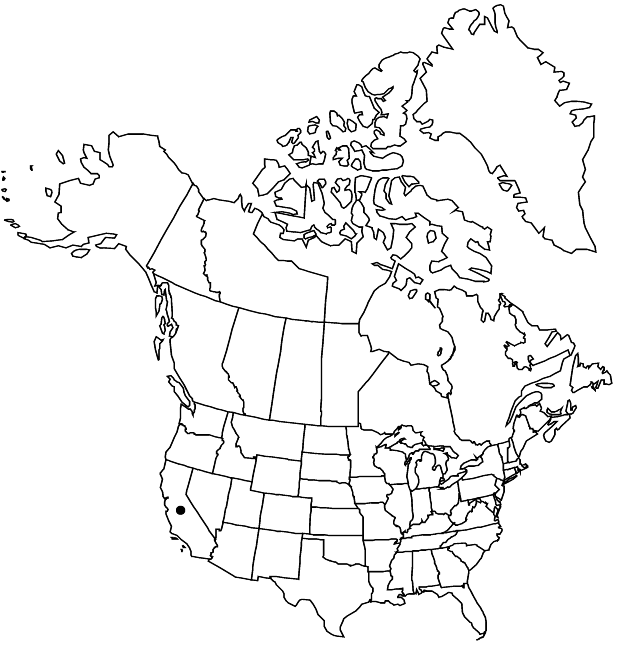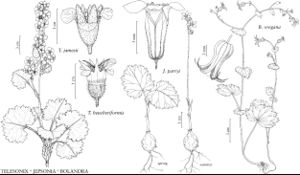Jepsonia parryi
Bull. Torrey Bot. Club 23: 18. 1896 ,.
Caudices unbranched, usually ovoid, rarely spheric. Leaves 1(–3). Inflorescences diffuse, 1–5(–10)-flowered; bracts scalelike; peduncle brown, drying light brown or gray, branched near middle, 3–28 cm. Flowers: hypanthium campanulate, 2.5–4 mm, length 2+ times sepals; sepals greenish, 0.8–2 mm, base flattened, glandular-viscid; petals withering, alternate with sepals, distinct, white with tan, maroon, or purplish veins, 3.5–6 mm. Pollen yellowish. Capsules green or tan with brown striations, beaks divergent. Seeds dark brown. 2n = 14.
Phenology: Flowering Oct–Feb.
Habitat: Shrubby, north-facing rocky slopes
Elevation: 0-1100 m
Distribution

Calif., Mexico (Baja California).
Discussion
Jepsonia parryi has the shortest flowering period and produces the fewest flowers in the genus. It also produces the fewest leaves, and in very dry years may produce no leaves.
